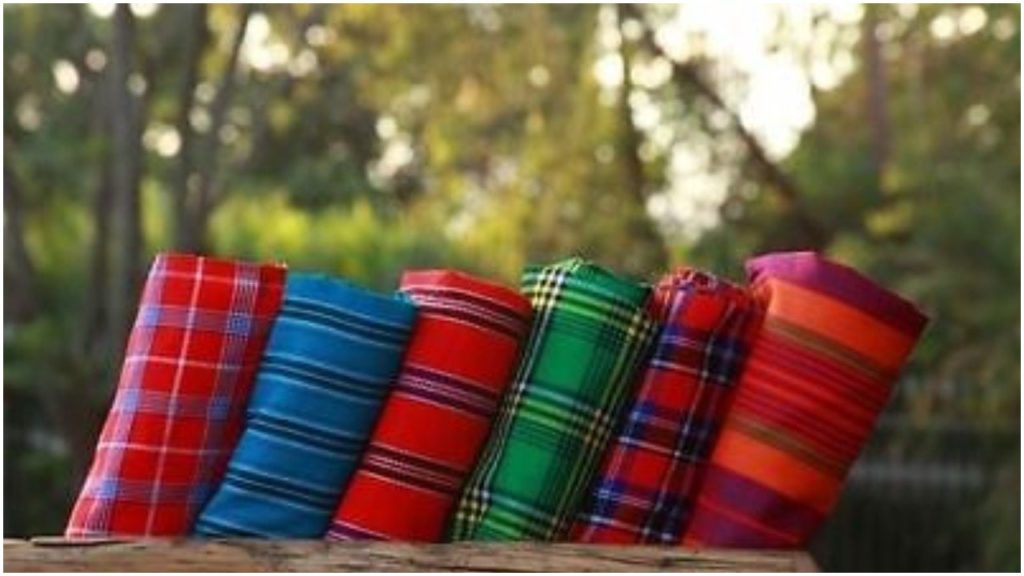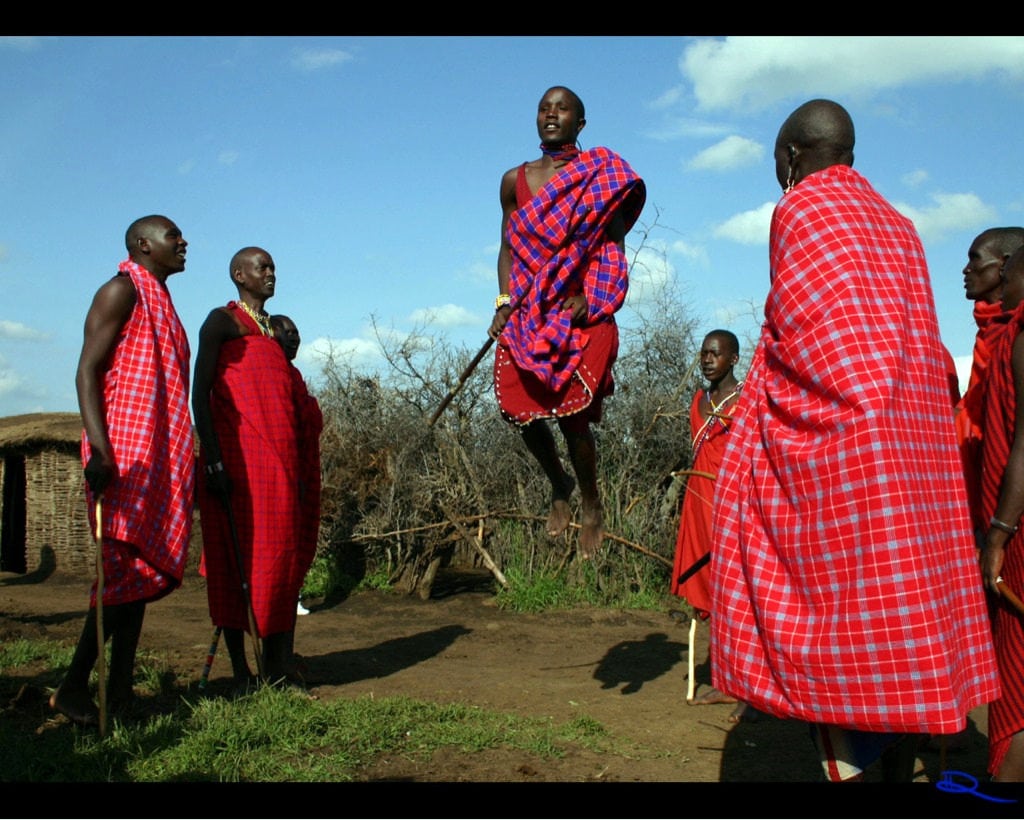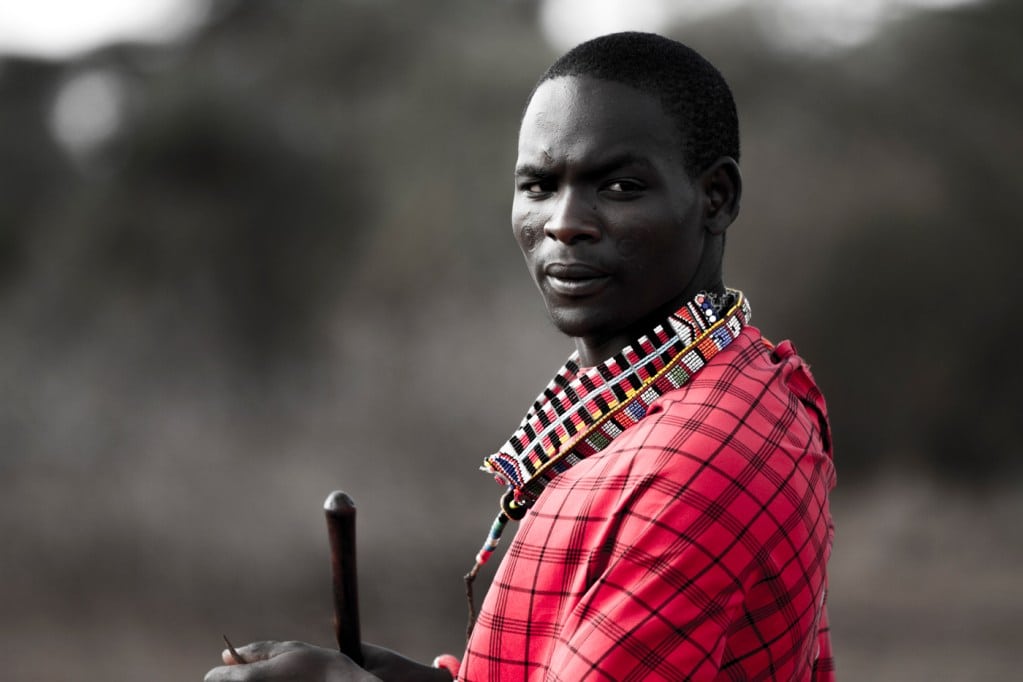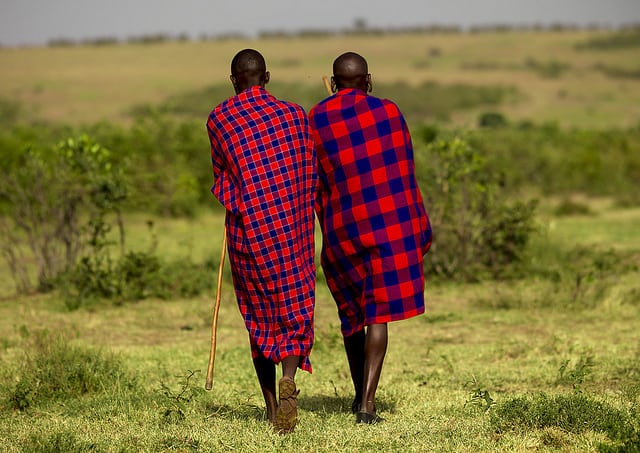The Maasai Shuka cloth is also called the African blanket but it is attributed to the Maasai people of East Africa as their traditional clothing.
The Maasai people of East Africa are some of the most prominent people in Africa. According to history, the Maasai originated from the north of Lake Turkana (north-west Kenya) in the lower Nile Valley. They began migrating south in the 15th century and arrived in the long trunk of land stretching across central Tanzania and Northern Kenya during the 17th and 18 century.
The Maasai territory reached its most dominant size in the 19 century when they covered most of the Great Rift Valley and adjacent lands from Dodoma and Mount Marsabit.
So today, they live in arid lands along the Great Rift Valley in Tanzania and Kenya and are known for their unique way of life, as well as their cultural traditions and customs. But a majority of them live on the Masai Mara National Reserve of Kenya.
The population of the Maasai people is currently at around 1.5 million
A hypothesis suggests that the Maasai warriors and soldiers by instinct are a descendants of a lost Roman legion that either deserted the army or became lost in the southern fringes of the Roman Empire.
So the tales of the Maasai people are often stories of strong warriors who formerly proved their mettle in the tribe by hunting and killing wildlife. The Maasai have, however, in recent times joined the fight to preserve wildlife and channelled their warrior energies into other avenues like the Maasai Olympics.
They lead a semi-nomadic life, their houses are loosely constructed and semi-permanent. The houses are usually small, circular houses built by the women using mud, grass, wood and cow-dung.
Maasai people are often identified in pictures with a traditional getup that includes; the Maasai shuka cloth, colourful beaded necklaces and sometimes an iron rod.
Dress code for the Massai people varies by sex, age and place. Young men, for instance, wear black for several months after their circumcision. Although, red is a favoured colour among the Maasai. Black, Blue, checkered and striped cloth are also worn, together with multicoloured African garments.
The Maasai’s shuka cloth is often coloured red with black stripes. The red colour of the traditional Maasai shuka is similar to what is believed to have been the uniform of the Massai soldiers who were fighting for the Roman Empire.
The shuka cloth can alternatively be blue, striped or checkered and is known to be strong and thick to help protect the Maasai from the harsh weather and terrain of the savannah, hence the moniker; the African blanket.
Origin of the Maasai Shuka Cloth
According to history, during the pre-colonial era, the Maasai people actually donned leather garments but by 1960s they began to replace sheepskin, calf hides and animal skin for a more commercial material that is wrapped around the body – the material was called Shúkà in the Maa language.
See Also: We Bet You Didn’t Know These About African Wax Prints Called Ankara
These claims are not 100% authentic, thus, the origin of the Maasai shuka cloth remains a much-disputed topic.
One side insists that the shuka cloth emerged when fabrics that were used as a means of payment during the slave trade, which landed in East Africa, were subjected to dying using black, blue, and red natural dyes that were obtained from Madagascar.
Another side explains simply that the Maasai cloth was brought in by Scottish missionaries during the colonial era. The two explanations have a basis in history that makes it hard to discount them completely.
However, the methods of production of the Maasai shuka cloth have evolved. It is usually manufactured in Dar es Salaam and even in China, bearing the text, “The Original Maasai Shuka” on the plastic packaging.
Also See: 40 Ghanaian Proverbs About Different Aspects Of
Life You Should Know
Even more interesting is the fact that the Maasai shuka cloth is gaining international prominence. The cloth has started popping up frequently in the global fashion world. In 2012, for instance, Louis Vuitton featured red and blue Maasai shuka in their Spring/Summer collection 2012, using the fabric to fashion hats, shirt, and scarves.



